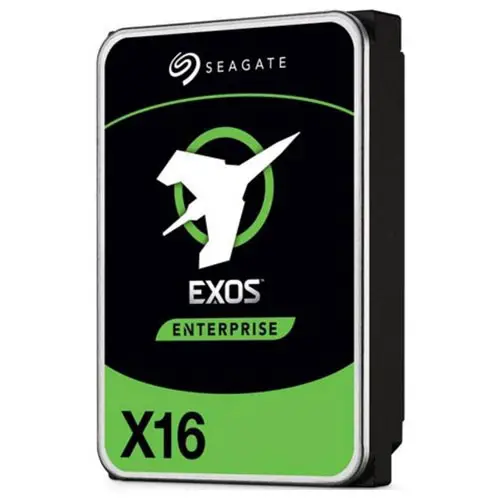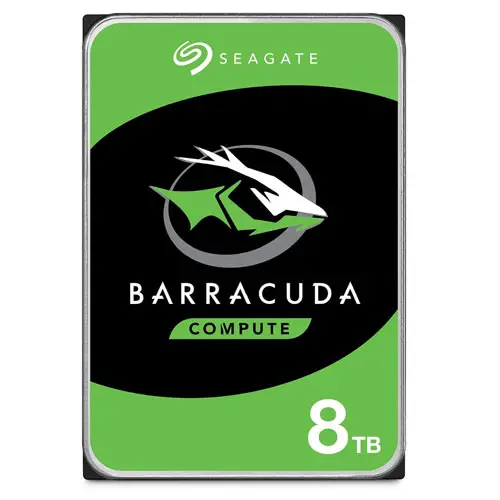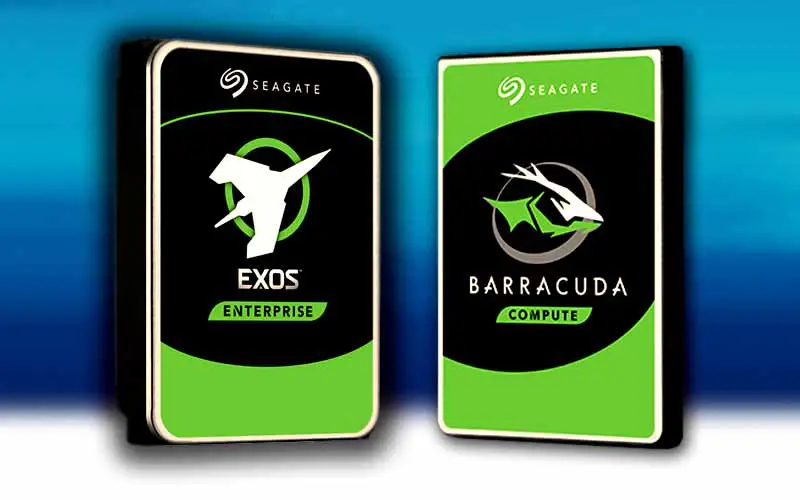The Seagate Exos X16 is a 3.5 inches Enterprise Hard drive which is a variation of consumer HDD models while the Barracuda is an Internal Hard drive.
And the Seagate Barracuda is available in 2.5 and 3.5 inches displays and Exos X16 is only manufactured in 3.5 inches sizes.
Let’s have a quick look at these devices before diving in:
Here the Seagate Exos X16;
- has more storage capacity.
- is more reliable with a higher MTBF value.
- has more transfer speeds.
- and has a 5-year warranty.
And on the other side, the Seagate Barracuda:
- performs better in extreme temperatures as has a broader temperature range.
- is more power efficient as consumes less power.
- has a more smooth and flexible design.
- has more advanced hardware.
- and also has a lower price.
Table of Contents
Side By Side Comparison:
Compared to Barracuda, the Seagate Exos has more storage capacity, is more reliable, and offers more transfer rates. Barracuda is better in extreme temperatures with a broader temperature range, consumes less power, has a more flexible design, and more advanced hardware. Exos offers a 5-year warranty while Barracuda offers a 2-year warranty at a lower price.


| Technical Specifications | Seagate Exos X16 | Seagate Barracuda |
| Product Type | Internal HDD | Enterprise SATA HDD |
| Technology | Helium Side Sealing Weld Technology | Multi-Tier Caching Technology |
| Super Parity | Yes | No |
| Warranty | 5 years | 2 years |
Overview of these devices
Seagate Exos has a helium-sealed design which creates less drag and turbulence.
It has a storage capacity of up to 16TB which shows how many files it can occupy.
It transfers data fluently with transfer rates up to 261MB/s. It provides quite reliable performance with an MTBF value of 2.5 million hours.
It is built with digital sensors which helps in improving technical performance and safety margins.
On the other side, the Seagate Barracuda is designed with Multi-Tier Caching Technology which helps in providing optimum performance.
It provides excellent performance in extreme temperatures and has a broader temperature range.
It is very power efficient as consumes less power than its competitor. Its DiscWizard Software helps in installing your new disk drive.
It has a very smooth design and is available at a low price.
Which one has a better hardware Design?
Both the contenders may have a rectangular shape but their designs are not the same.
The Seagate Barracuda has a quite smooth design with plain curved corners. Whereas, Exos has sharp triangle corners with a small circular design at the top left of the hard drive.
The Seagate Exos x16 has a helium-sealed design which means that air is replaced with helium within its design.
It is designed with idle Power Technology and Power Balance Technology.
Its design includes hot plus support and contains a cloud data center for big applications.
It is also embedded with digital sensors to monitor hard drive conditions.
On the other hand, the Seagate Barracuda is specially designed for All-in-one storage, home servers, and Das devices.
It is designed with DiscWizard software and Multi-tier Caching Technology. It has a very versatile and flexible design.
When talking in terms of hardware, Barracuda has a SATA 6GB/s interface.
It is also Rohs Complianed and halogen-free. Exos has SATA 6GB/s and SAS 12GB/s interfaces.
With its more storage capacity, Seagate Exos X16 also has more weight and both the contenders have exactly the same dimensions.
After analyzing all the factors mentioned above, we can say that Barracuda has a more flexible design and advanced hardware.
| Parameter | Seagate Exos X16 | Seagate Barracuda |
| Dimensions (W x H x D) | 101.85mm x 26.11mm x 147mm | 101.85mm x 26.11mm x 147mm |
| Weight | 14 and 16TB= 670 grams | 8TB = 630 grams 6TB = 610 grams |
| Interface | SATA and SAS | SATA |
| Hot Plug Support | Yes | No |
| Halogen Free | No | Yes |
| ROHS Compliant | No | Yes |
Features of Seagate Exos X16
- It is made with digital environmental sensors which allow you to remotely monitor environmental conditions both indoors and outdoors for optimal operation and performance.
- It is RSA 2048 firmware verified and has an RPM of 7200 (Revolutions per minute).
- It features Enterprise D2D backup which uses these virtual tapes to save backup data by writing to the VTL and restores the backup data by reading from the VTL.
- It is built with a Hyperscale SATA model which helps in large data transfers and can scale a distributed computing environment up to thousands of servers.
- It also includes Helium Side Sealing Weld Technology which replaces the air inside the HDD with helium and helps to increase the medium’s potential speed and storage density.
Features of Seagate Barracuda
- It is built with Advanced Power Mode which you can switch on in order to save energy.
- It has a SATA 6GB/s interface which allows data transfer between the host bus adapter and a variety of different storage drives.
- It includes Multi-Tier Caching Technology which optimizes read/write data flow and brings the highest performance to a multitude of applications.
With more advanced features, Exos wins this competition against its competitor.
Storage Capacity Differences
Seagate Exos X16 is available in four storage capacity sizes from 10TB to up to 16TB while Barracuda has a storage capacity of up to 8TB but is available in 7 sizes.
Although Seagate Barracuda is available in more sizes but will still be inferior to its competitor in this category as X16 has higher storage capacity.
| Parameter | Seagate Exos X16 | Seagate Barracuda |
| Storage Capacity | 10TB, 12TB, 14TB and 16TB | 500GB,1TB,2TB,3TB,4TB,6TB, 8TB |
Which device offers better Transfer Rates?
Transfer rate is a standard metric that is used to measure the speed at which data or information travels from one location to another.
A higher transfer rate assures shorter download times and transfers data from one device to another at a faster speed.
The Seagate Exos X16 has a transfer rate of up to 261MB/s while Barracuda has a transfer rate of up to 220MB/s.
The Exos X16 has a higher transfer rate than its competitor as it has higher bandwidth.
Do they heat up quickly?
A hard drive that consumes more power heats up earlier and will cause lag in your device. This not only increases your electricity cost but also damages your device over time.
Seagate X16 consumes up to 6.3W of power in its 14TB hard drive during reading/writing while Barracuda consumes up to 5.3W of power in its 6TB and 8TB hard drives.
The Exos X16 consumes more power than its competitor which makes it less power efficient.
This makes Barracuda superior to its competitor in this category.
| Power Components | Seagate Exos X16 | Seagate Barracuda |
| Read/Write | 6.3W (14TB) | 5.3W (6TB and 8TB) |
Which Device performs in extreme Temperatures
Every hard drive has a different temperature range and when its temperature exceeds the range limits, the chance of hard drive failure increases to a great extent.
Seagate X16 has a temperature range of 5 to 60 oC while Barracuda has a temperature range of 0 to 60 oC for all of their different sizes.
Barracuda has a broader temperature range than its competitor so wins this contest.
Which device has more overall Reliability?
Reliability is directly proportional to MTBF (Mean Time Between Failures) value which means that the higher the MTBF value, the more reliable hard drive will be considered.
MTBF is a crucial maintenance metric to measure the performance stability of a hard drive.
It simply measures the average time elapsed between failures and breakdowns of a system.
Seagate X16 has a much higher MTBF value and will be considered more reliable than its competitor.
| Reliability | Seagate Exos X16 | Seagate Barracuda |
| MTBF (million hours) | 2.5 | 0.6 |
Do they Offer any Warranty?
A better warranty always shows more trust and reliability for its products.
Both the contenders are manufactured by the same company but have different warranty periods.
Exos has a 5-year whereas Barracuda has a 2-year warranty for its 3.5-inch drives.
Hence Exos takes the lead in this contest.
Which is more Pricey and why?
The Seagate Exos has a way higher price than its competitor as it has more storage capacity, is more reliable, has a higher transfer rate, and offers a longer warranty period.
